Experimental reconnaissance aircraft Abrams P-1 Explorer
Talbert Abrams began work in the field of photogrammetry as early as 1917 and among Americans was one of the pioneers in this field. In 1925, he founded the Abrams Aerial Survey Corporation to create the best vehicles for filming and developing aircraft for aerial surveys. It is worth noting that in the 1930-e years, aerial photography in the United States developed rapidly and acquired great importance, which was the impetus for the development of specialized aircraft, and Abrams Aerial Survey Corporation became one of the leaders in the industry. Presumably Abrams P-1 Explorer was the first aircraft that was specifically designed for aerial photography, the materials of which were to be used to produce detailed geographical maps.
To create a specialized aircraft Abrams approached with his characteristic thoroughness. Its industry-leading authority, Abrams Aerial Survey Corporation, had fairly close contacts with pilots and aerial photographers around the world. He exchanged views and experiences with these people when designing his aircraft. Abrams also connected the exchange of experience with the National Advisory Committee for Aeronautics (National Advisory Committee for Aeronautics, in the future NASA) and many universities in the country. As a result, the accumulated experience allowed us to formalize the idea of an ideal aircraft designed for aerial photography.
Such an aircraft, among other things, was supposed to provide the pilot and the photographer with the maximum possible view, especially in the “forward-down” direction, as well as in both directions. Provide convenient and efficient equipment layout for aerial photography and crew. Also, the aircraft required high stability in flight and a long range. Chief Designer Kenneth Rohan made every effort to bring the ideas of Talbert Abrams to life and create his “dream plane”. The US military was also interested in this project, as they saw in it a reconnaissance aircraft capable of operating in a wide range of heights. However, the interest of the military to the project faded with time, as they preferred to use high-speed fighter aircraft as photo reconnaissance aircraft.
For Abrams, this project was the realization of his personal ambitions and designs. To do this, he hired designers and engineers, rented a room for them to work, ordered from the Germans from the Rohm & Haas company plexiglass glazing of the cab (at that time expensive and rare). The result of all these actions was the appearance of the Explorer aircraft, which made its first flight on November 20, 1937. The car was lifted into the sky by the famous American pilot Walter Carr. The first camera that was installed on an aircraft was the C-3 camera, which is a proprietary design by Abrams Instrument Corporation. This camera took 650 9 ”by 9” images in one flight.
The engine was located not in the front, but behind the cockpit. Instead of a pulling propeller, a pushing screw was used. The place of the cameraman-photographer was not somewhere behind in the open fuselage, but rather far from the engine in front of the aircraft in a glass-enclosed cockpit, from where a wonderful view was opened. His workplace was located far enough away from the power plant — the engine and propeller running, as well as the vibrations caused by them in flight. A powerful enough engine for a light aircraft, the car provided good flight performance. The use of two tail beams in the design of the aircraft, between which the pushing propeller was located, protected the technical staff when working with the power plant on the airfield. In addition, all the compartments of the aircraft and the equipment and instruments installed on it had fairly convenient access, which was the dignity of the aircraft.
A similar combination of relatively high flight speed and excellent working conditions for crew members (360 ° viewing sector on the sides, 225 ° on the horizontal, 200 ° on the vertical) combined with very high directional stability at that time did not have any other aircraft in the world. Among other things, Abrams P-1 Explorer was very easy to operate and met the highest standards that were imposed on aircraft designed for aerial photography of the area. Featuring a very good view from the cab, Explorer was operated almost as easily as a passenger car. And due to the presence of the front landing gear during taxiing at the airport, the aircraft was also more convenient for the crew than some of its competitors.
The design of the aircraft Abrams P-1 Explorer
The aircraft Abrams P-1 Explorer was a double free-carrying midplane. The design of the aircraft P-1 Explorer was based on a frame that was assembled from steel pipes and was almost entirely sheathed with thin sheets of aluminum. The only exceptions were wing consoles, which had a canvas covering. Based on the specifics of the use of the aircraft, the cockpit was made quite voluminous, it differed in a very large glass area. Externally, the cabin resembled the bow of the bombers of those years. For the convenience of crew members at high altitude, the cabin was completely sealed, it was equipped with the necessary oxygen equipment. At the back of the fuselage was a Wright R-975-E3 radial engine, enclosed by a NACA annular hood and fitted with a Hamilton Standart pushing propeller. The horizontal and vertical tail of the aircraft was located at the ends of sufficiently long tail beams.
The tricycle landing gear of the aircraft with the front desk in order to reduce the cost and simplify the design was made not removable, but the landing gear and wheels were covered with fairings. Rack chassis had spring damping and hydraulic braking system. The front wheel of the aircraft’s landing gear could rotate 360 degrees. Rear emergency crutches were located at the bottom of the keels.
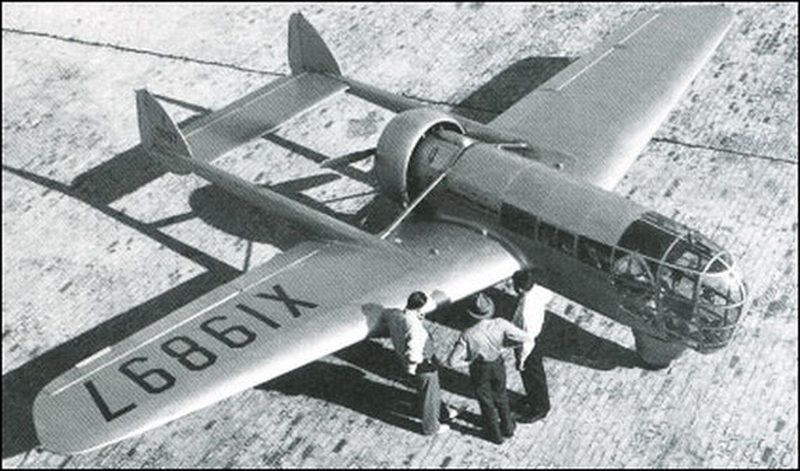
Airtight cabin had a trapezoidal shape. At the location of the air-cooled engine, the cross-section of the fuselage had a rounded shape. Doors for crew members to enter the aircraft were located on both sides of the fuselage. The fuselage power pack consisting of steel pipes was welded. The front of the fuselage in the cockpit area was glazed. Chairs in the cockpit were arranged one after the other. The equipment installed inside the aircraft corresponded to what was put on aircraft designed for aerial photography. Special doors that allow shooting at an angle to the vertical, a sealed cut-out in the cabin floor for installing the camera, an air conditioning unit and cabin heating were designed to improve the working conditions of the crew and contribute to the effective implementation of the tasks.
The wing of the aircraft was made one-piece, cantilever, single-spar. The spar and ribs of the wing were made of steel pipes. The wing center section possessed metal lining, and the wing consoles were covered with canvas. The control of the flaps was done manually. The ailerons of the wing were trimmed. The vertical tail of the aircraft was oval in shape and consisted of two keels, as well as two rudders, equipped with trimmers. The horizontal tail of the plane of a rectangular shape consisted of a rudder and a stabilizer. The design of the horizontal tail unit of the aircraft was identical to the design of the vertical tail unit: the power set was made of steel pipes, and the outer skin was covered with a sheet.
The power plant of the aircraft included an air-cooled engine with a Townend ring and a variable pitch propeller. Initially, the aircraft was equipped with a Wright R 975-E engine, which developed power in the 330 HP. at 2100 rpm. However, later, the designers installed a more powerful engine on the machine: Wright R 975-E3, which developed the power of the 450 HP. at 2250 rpm. In this case, the power set Abrams P-1 Explorer was designed in such a way as to provide the machine with an increased margin of safety. This allowed in the future, if the aircraft was launched into mass production, to place on it an engine with power up to 1000 hp.
In addition to a variety of cameras that could be easily changed depending on the type of surveys carried out and the tasks set before departure, the aircraft had the usual instrumentation equipment for navigation aircraft, navigation lights, a fire extinguisher and other parts. Also, the P-1 Explorer received a light-tight case in a dark room in order to recharge the captured films during the flight and a special mobile device with mounts for installing the camera.
Tests and fine-tuning the aircraft continued until the entry of the states into World War II. The results obtained during the tests were supposed to be the basis for the development of the Abrams PC-4 Explorer reconnaissance aircraft, but it never came to the creation of this aircraft. At the same time in the 1944, Abrams stopped the work of the company Abrams Aircraft Corporation, which he founded in 1936,. After the end of the Second World War, the prototype P-1 Explorer, like all other piston-powered aircraft, was driven out by new, higher-speed jets with jet engines, which often also had more modern equipment for film and photography.
In this case, the aircraft P-1 Explorer operated for five years, performing various civil orders - from planning agricultural land to mapping areas. After that, the prototype of the Abrams P-1 Explorer was first mothballed, and in 1948 the aircraft was transferred to the National Aviation and Space Museum (Smithsonian Institution in Washington), which it is today.
Flight Abrams P-1 Explorer Specifications:
Overall dimensions: length - 8,3 m, height - 1,9 m, wing span - 11,7 m, wing area - 18,58 m2.
Empty aircraft weight - 1067 kg, maximum take-off - 1545 kg.
The power plant - 1 PD Wright R 975-E3 power 450 HP
The maximum flight speed is 322 km / h.
Cruising flight speed - 282 km / h.
Practical range - 1931 km.
Practical ceiling - 6096 m.
Crew - 2 person (pilot and photographer).
Information sources:
http://www.airwar.ru/enc/law1/p1.html
http://alternathistory.com/vysotnyi-samolet-dlya-aerofotosemki-abrams-explorer-p-2-stratoplane-ssha
http://www.aviarmor.net/aww2/aircraft_exp/usa/abrams_p1.htm
http://www.popmech.ru/technologies/246292-samolyet-dnya-abrams-p-1-explorer
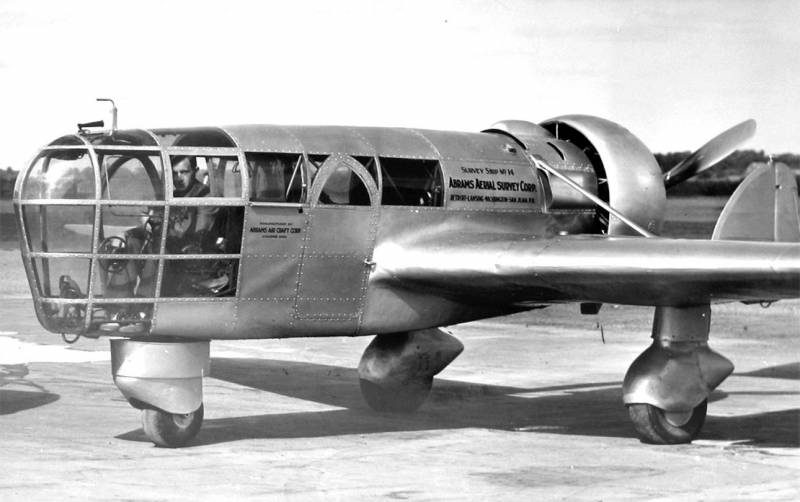
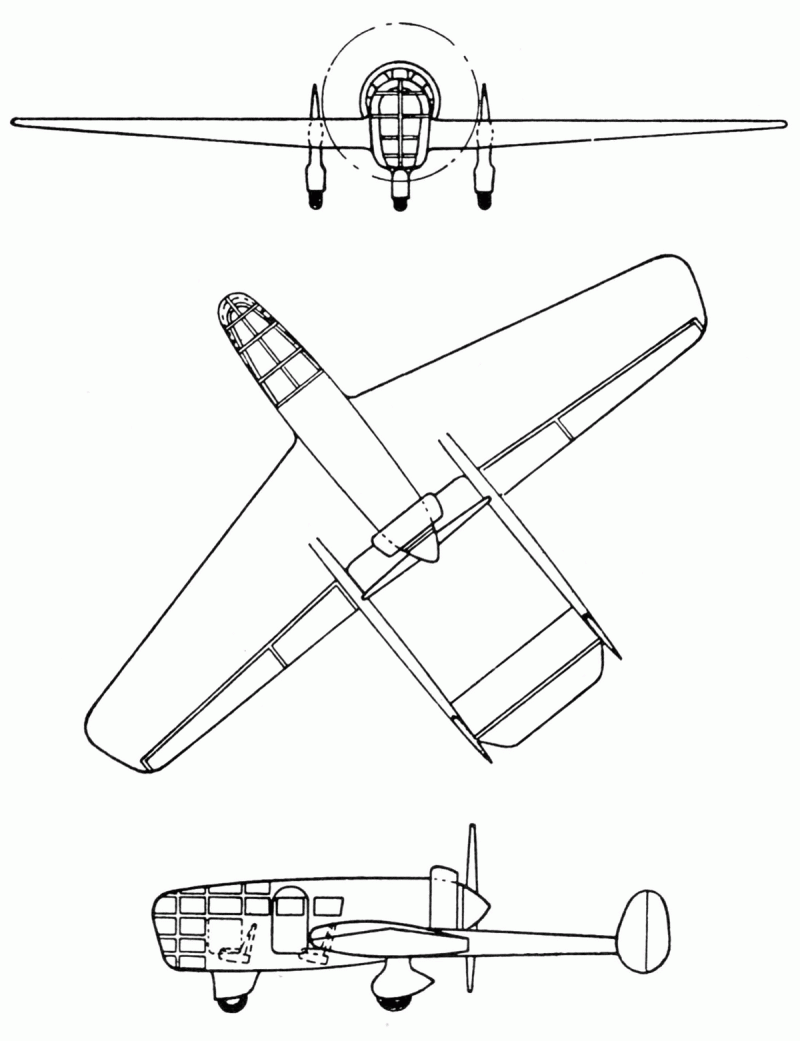
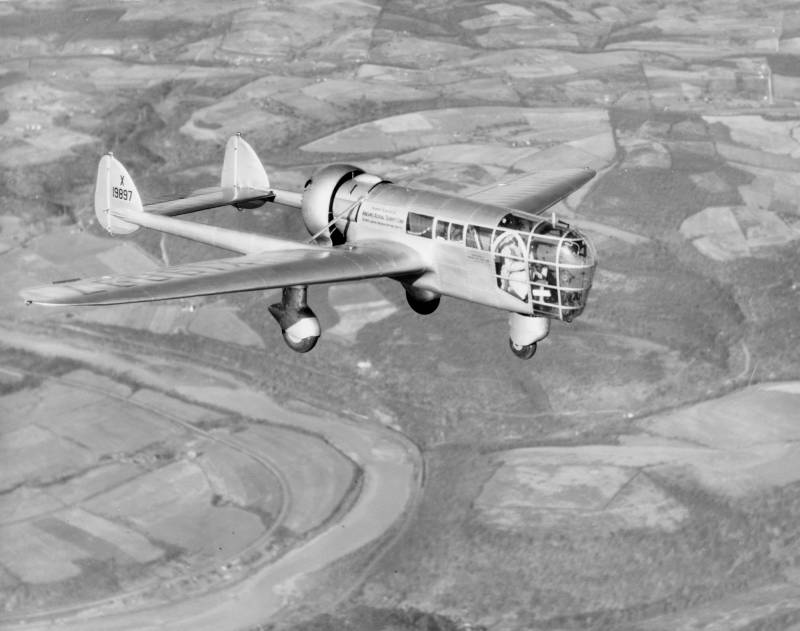
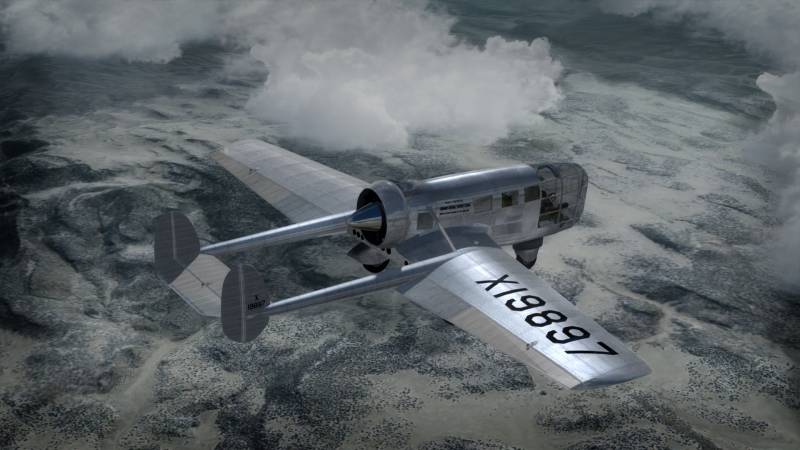
Information